Water Snakes Found in Virginia Rivers
Virginia is home to some serious snakes. There are multiple venomous species, although the majority of water snakes in Virginia are harmless. The main species in the state include cottonmouths, also known as water moccasins, brown watersnakes, northern watersnakes, and plain-bellied watersnakes. While these snakes share some features, cottonmouths have a much smaller range in the state.
The Virginia Department of Wildlife Resources identified the southeastern part of the state as the main area populated by cottonmouths. They further narrowed it down to the southern parts of Virginia Beach and Chesapeake. There are also some small colonies in nearby Suffolk and Newport News, as well as in the counties of Brunswick, Chesterfield, Dinwiddie, Greensville, Prince George, Southampton, Surry, Sussex, and York. This smaller range means that most of the snakes seen in the water in Virginia rivers are not cottonmouths.

Cottonmouth Snakes
Adult cottonmouths can get up to 30 inches or more and have a venomous bite. They are large, stocky snakes and can grow as long as 60 inches. One of the most distinct features is their white mouth when they bare their fangs. They typically do this when they feel threatened, although that doesn’t necessarily mean that they are about to bite. Cottonmouths can be black, dark brown, gray, or tan. They have crossbands with a lighter center, one of their distinguishing features. Cottonmouths also have large heads that are triangular-shaped.
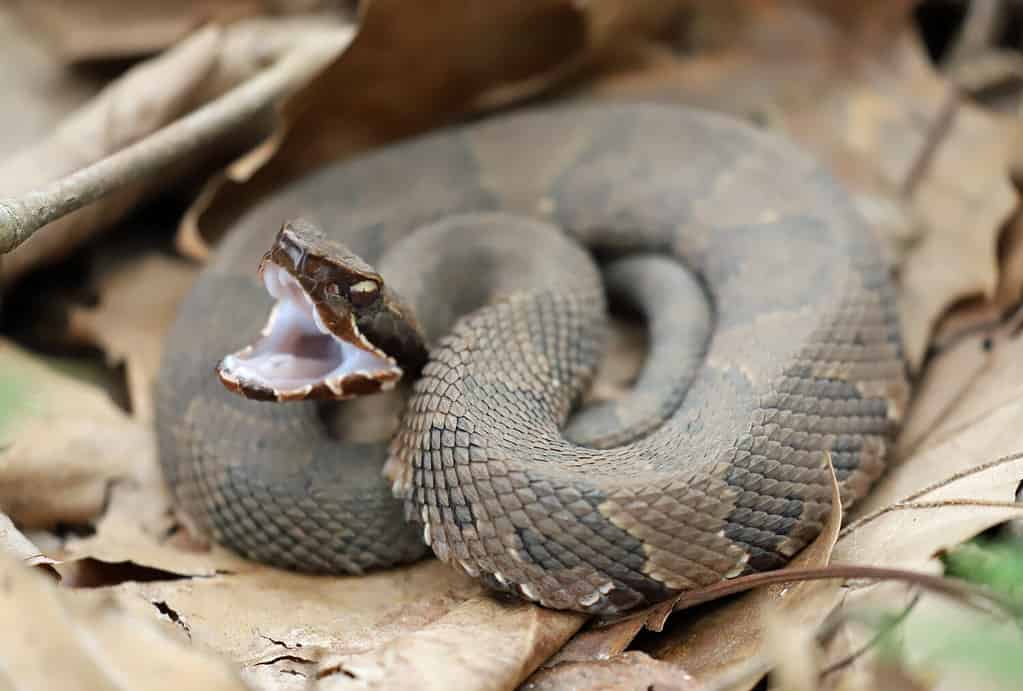
Cottonmouths are the only venomous snake found in Virginia rivers.
©KF2017/Shutterstock.com
Brown Watersnakes
These are the most common watersnakes in Virginia and live throughout the state. They can live in rivers, streams, lakes, and even small bodies of water like ponds or pools. They have similar markings to cottonmouths, leading to many misidentifications. Brown watersnakes are not venomous and do not pose a threat to people or animals.
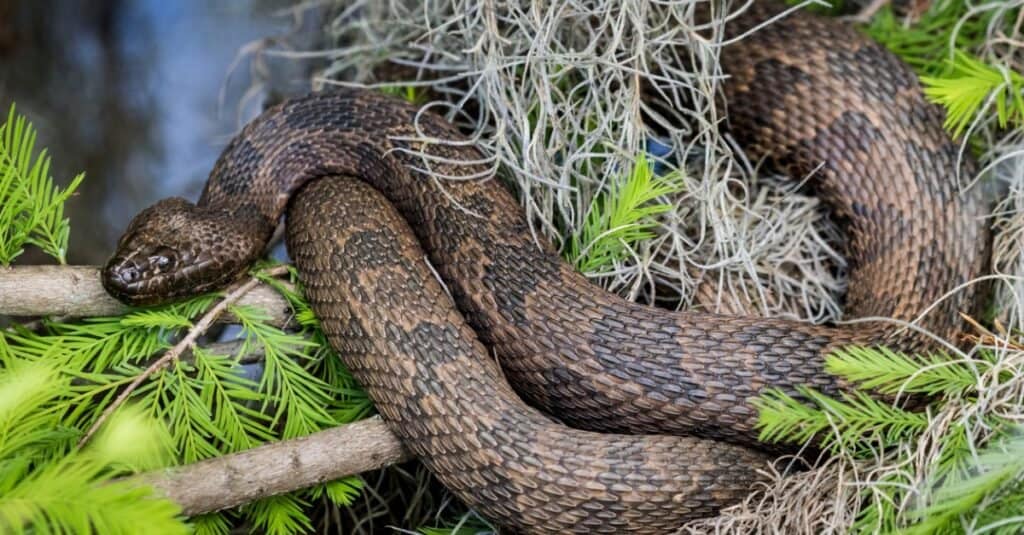
Brown watersnakes are the most common watersnakes in Virginia.
©iStock.com/csraphotography
Northern Watersnakes
This snake also looks similar to a cottonmouth, although there are some key differences. Northern watersnakes are more slender and have flat heads. Their neck areas are not narrow, while cottonmouths have distinctly narrow necks and wider heads. Northern watersnakes are not venomous but some people mistake them for copperheads.

Northern watersnakes are the most common of all watersnake species.
©Patrick Coin / CC BY-SA 2.5 – License
Plain-Bellied Watersnakes
While they also live in watery areas, plain-bellied watersnakes look very different from copperheads. They typically do not have any pattern on their backs and are solid black, dark brown, gray, or even olive green. Their bellies are also plain, although a much lighter color like tan or cream. They are not venomous and live in bodies of water throughout Virginia.
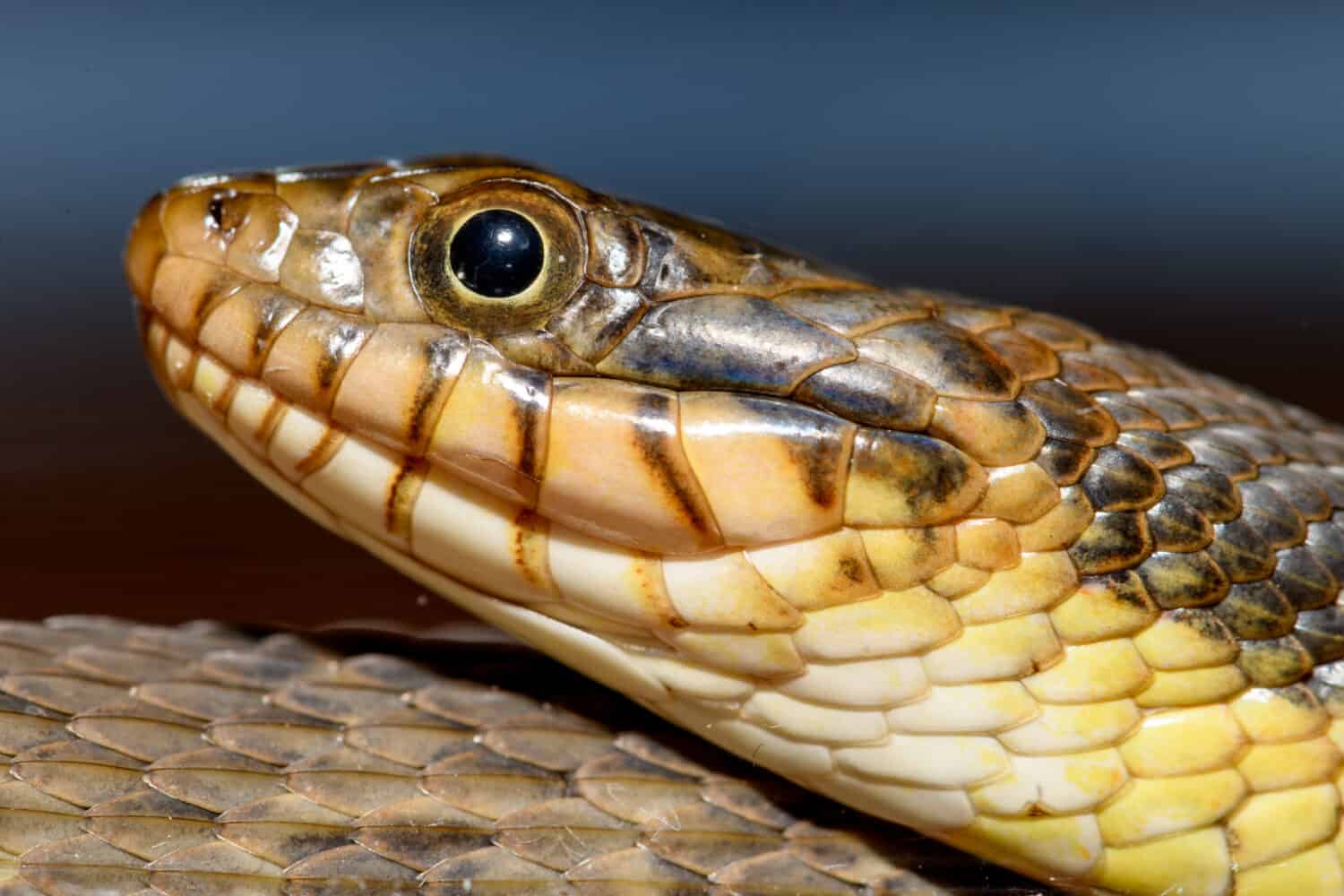
Plain-bellied watersnakes get their name from their light, plain bellies.
©Jeff W. Jarrett/Shutterstock.com
5 Most Snake-Infested Rivers in Virginia
#1 James River
This is the longest river in Virginia so it is no surprise that it has many snakes in its waters. The river begins in the Appalachian mountains and flows east until it empties into the Chesapeake Bay. Northern water snakes are common in this river, according to Virginia Animal Control. It is actually illegal to kill a snake in Virginia, even venomous species unless they pose an immediate threat.
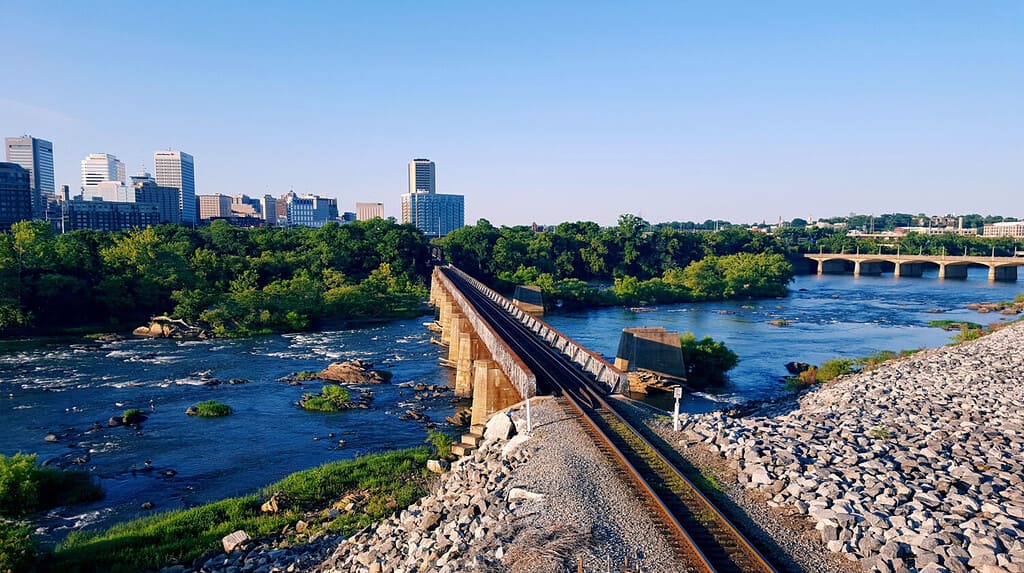
Beyond being a simple river, the James River carries great significance in American history, shaping the nation into what it is today.
©casualskydiving/Shutterstock.com
#2 Appomattox River
This is a tributary of the James River. Many of the same species are in both rivers. The lower part of the Appomattox does have a population of cottonmouths so if you see snakes in that area, pay close attention to their markings. It is actually an urban myth that cottonmouth snakes will chase you and are aggressive. More often, they will try to get away and only bite and attack if they feel threatened.
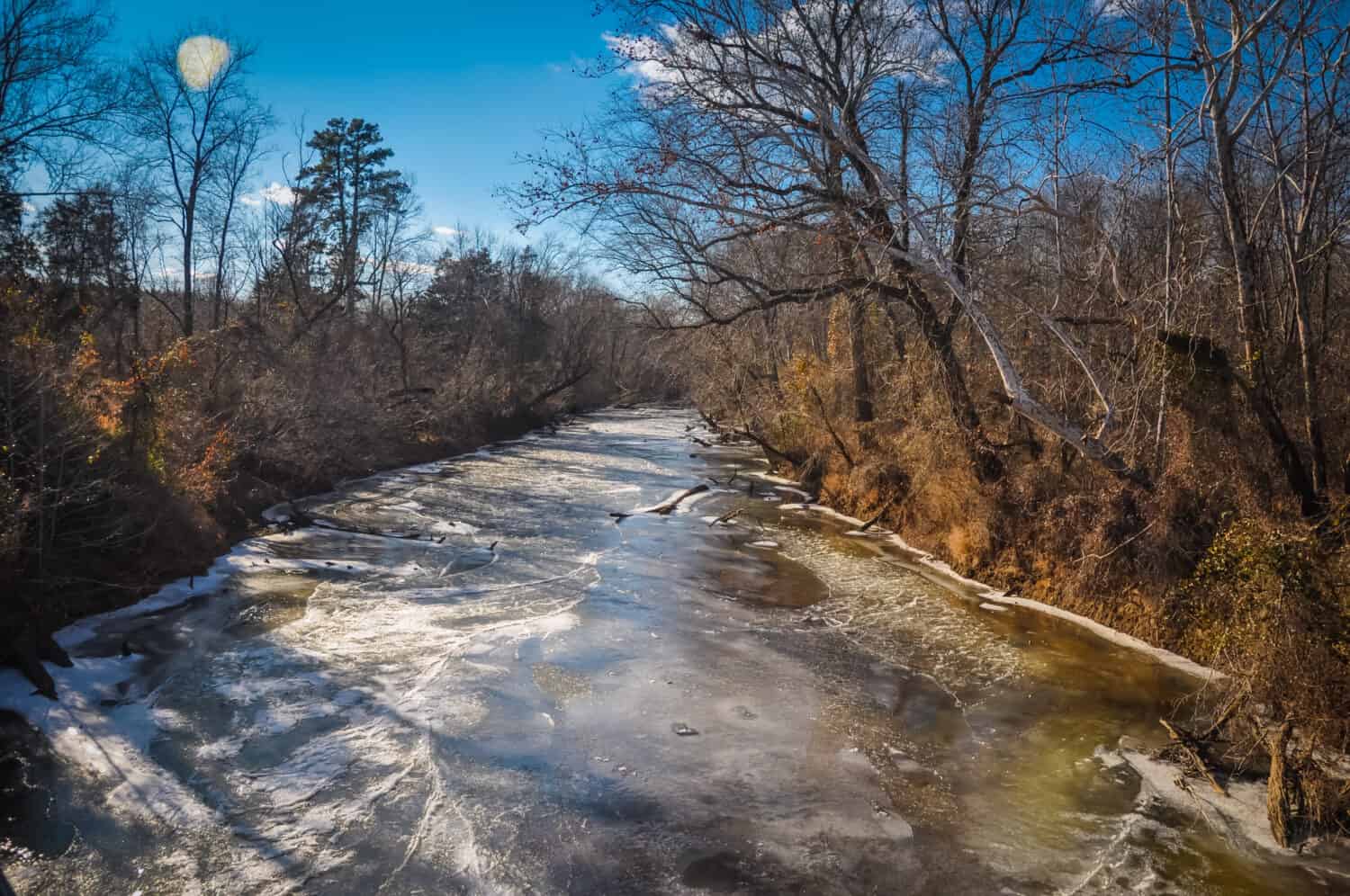
The Appomattox is a tributary of the James River.
©Jon Marc Lyttle/Shutterstock.com
#3 Roanoke River
This river passes through southern Virginia into North Carolina. Cottonmouths are not usually seen in the Roanoke River. Snakes in this area include the brown watersnake, northern watersnake, and plain-bellied watersnake. None of these snakes are venomous so you generally don’t need to be worried if you spot one while on or near the river. It’s always a good idea to leave any snake alone, however. The Blue Ridge Parkway runs along the Roanoke River and has great places to access and view the river. You may also run into other wildlife species.
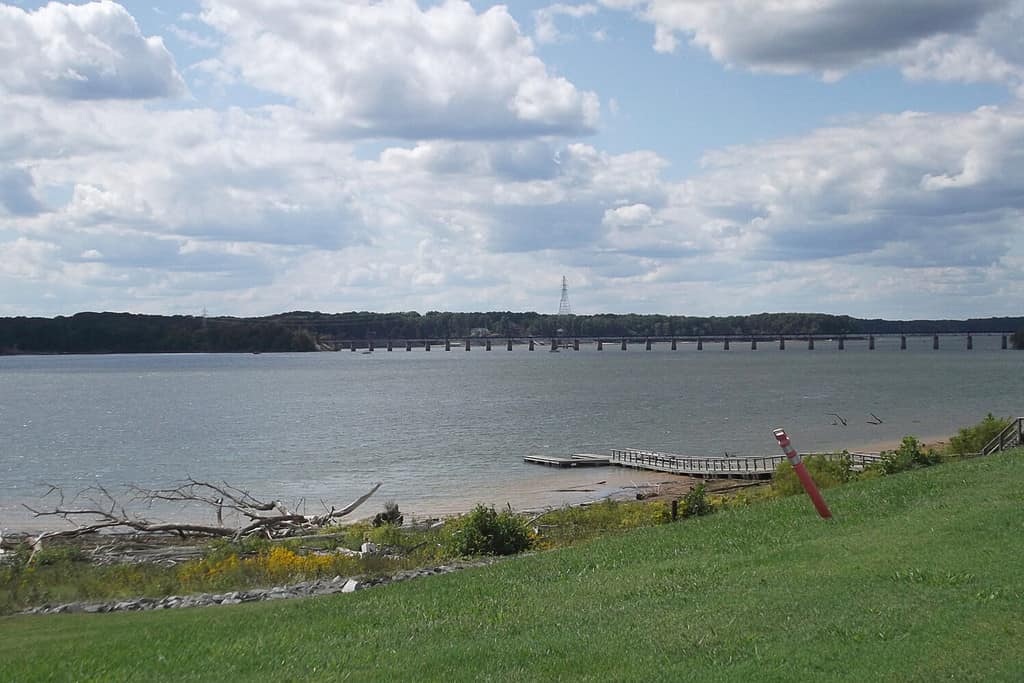
The John H. Kerr Reservoir is one of those connected to the Roanoke River.
©J. M. Pavlic III/Shutterstock.com
#4 New River
Seeing cottonmouths in the New River is extremely rare. Northern watersnakes and brown watersnakes are more likely. However, because they have similar markings, people who are wary of snakes may misidentify them as cottonmouths and be worried. But you can swim, tube, fish, and enjoy the New River without being too concerned. It is very likely that any snakes you see are not venomous.
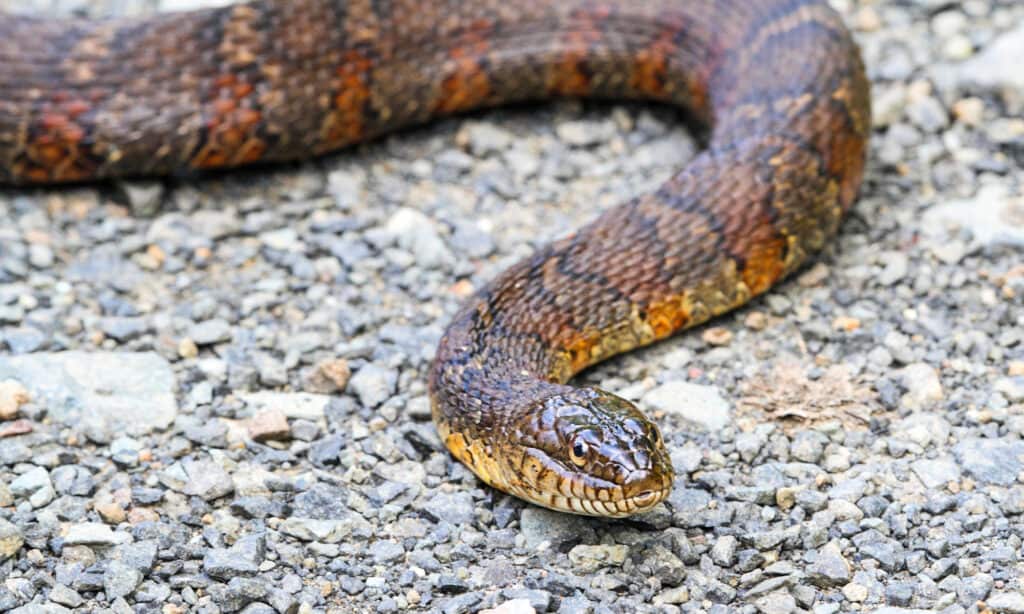
Northern watersnakes are one of the most widespread watersnakes in North America.
©Steve Byland/Shutterstock.com
#5 Potomac River
Brown watersnakes and plain-bellied watersnakes are the most common in the Virginia portion of the Potomac River. This river goes through three states and the District of Columbia. The river goes for around 383 miles and ends in the Chesapeake Bay in Maryland. The Potomac goes through rural areas as well as very populated areas, especially around DC. This can drastically change the animals that have access to the river, including snakes.

The Potomac River passes through Northern Virginia.
©PQN Studios/Shutterstock.com
Summary of the Most Snake-Infested Rivers in Virginia
| # | River | Snakes |
| 1 | James River | Brown watersnake, northern watersnake, plain-bellied watersnake, cottonmouth |
| 2 | Appomattox River | Brown watersnake, northern watersnake, plain-bellied watersnake, cottonmouth |
| 3 | Roanoke River | Brown watersnake, northern watersnake, plain-bellied watersnake |
| 4 | New River | Brown watersnake, northern watersnake, plain-bellied watersnake |
| 5 | Potomac River | Brown watersnake, northern watersnake, plain-bellied watersnake |
Other Animals Found Near Rivers in Virginia
Other animals live around many of Virginia’s rivers and natural areas. White-tailed deer, raccoons, squirrels, wild turkeys, and eastern cottontails are all plentiful in rural and suburban areas. Many rivers in Virginia go through wooded areas that provide plenty of shelter, food, and water for these animals to thrive.
Other snakes in Virginia include timber rattlesnakes, copperheads, eastern rat snakes, and eastern garter snakes. Both the timber rattlesnake and copperheads are venomous like the cottonmouth. They tend not to live in the water and aren’t often seen in rivers. However, you may run into one of these other snakes on a trail or in a wooded area near a river. Like with all snakes, it’s best to keep your distance. If you do get bit by a snake, always call for help and try to remember details or take a photo for identification.
The official state bird of Virginia is the cardinal. These birds are seen all through the state and are easy to recognize thanks to their red plumage. The eastern garter snake is the state snake. These dark green snakes have bands that run along their bodies, making them easy to recognize. They are plentiful in Virginia as well as many other states. The tiger swallowtail butterfly is the state butterfly. The state legislature made this designation in 1977!
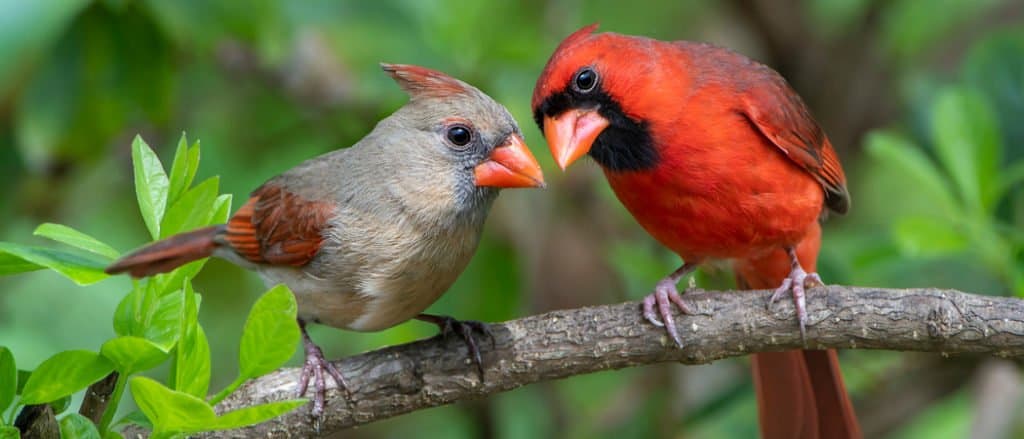
The official state bird of Virginia is the cardinal.
©Bonnie Taylor Barry/Shutterstock.com
Large predators in Virginia include black bears, bald eagles, and even sharks off the coast. These animals depend on having plenty of space to roam and food available. They aren’t found in all parts of the state. Other than the sharks, they tend to be more common in rural, wooded areas.
The photo featured at the top of this post is © Xavier Ascanio/Shutterstock.com
Thank you for reading! Have some feedback for us? Contact the AZ Animals editorial team.






